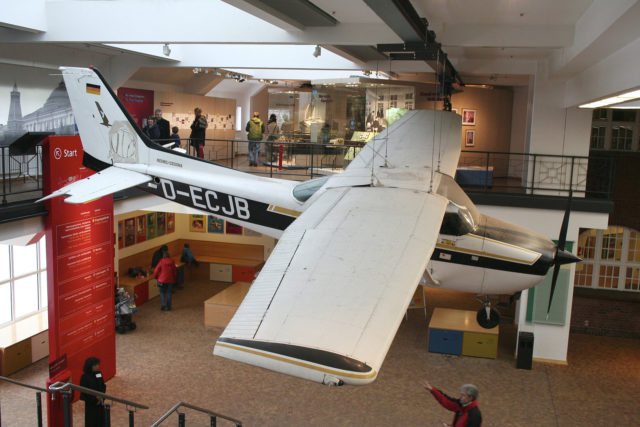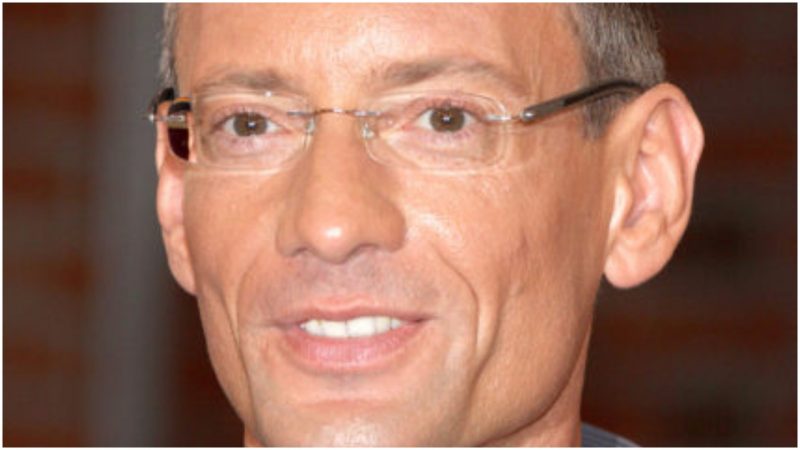Landing a plane is not an easy task, and landing a plane on the Red Square in Moscow during the cold war seems like an impossible thing to do, but this is exactly what the German teenager, Mathias Rust, did back in 1987.
Near the end of the Cold War period, tensions between the Soviet Union and the Western Bloc were high. Both sides were suspicious of one another, and there was a constant feeling that a nuclear attack might be imminent. Back in those days, Mathias Rust (born June 1, 1968) was a young amateur pilot with only 50 hours of flying experience. One day, Rust, who was 18 at the time, came up with the idea that quickly became a worldwide media sensation. His plan was to land a plane on the Red Square in Moscow.
After he obtained a plane and gathered all that he needed for the trip, Rust began his journey. He took off on May 13, 1987, in a rented Reims Cessna F172P D-ECJB from the airport of Uetersen, close to his hometown Wedel. He modified the plane by adding a few more fuel tanks that were necessary for the long flight.
After flying around Northern Europe for two weeks, Rust decided that he is ready for his final destination. After refueling at the Helsinki-Malmi Airport early in the morning of May 28, 1987, Mathias told air traffic control that he was flying to Stockholm. He received the permission to take off, but instead of heading to Stockholm, Rust turned off the communications equipment and turned the Cessna towards the East, on the Helsinki – Moscow route.
When he disappeared from the Finnish air traffic radar, the authorities thought that he crashed or had an emergency landing and organized a rescue mission. A Border Guard patrol boat found an oil patch near the location where the plane disappeared, and they did an underwater search but found nothing. Rust later received a €77,500 ($105,000 USD) fine for this expensive search he caused.
A few hours later, Rust flew over Estonia and navigated towards Moscow. When he entered Soviet airspace, he was spotted on a Soviet Air Defense (PVO) radar after he failed to reply to a standard IFF signal. He was given a combat designation, and interceptors were sent to track him down but never received orders to engage and shoot him down. Soon they lost contact with him again. Rust reappeared on the radar a few times more but an air crash from the previous day, and increased air traffic, forced air traffic controllers to give him a low priority and confuse him with a friendly aircraft.

At 7:00 P.M., Rust finally reached Moscow. His original plan was to land in front of the Kremlin. He changed his mind because he believed that if he landed there, behind the walls of the Kremlin, he would be immediately arrested and the whole incident would be denied by the KGB (and he was probably right). He made another circle above the Red Square and decided that the best place for him to land would be the Bolshoy Moskvoretsky Bridge by St. Basil’s Cathedral.
He managed to land the plane safely, and taxi it past the cathedral. He was finally there, just 330 ft (100 meters), from the Red Square! People started to gather around him and greet him, unaware of who he is and what he did.
When people asked him where is he from, he answered “Germany” and everybody thought that he’s from East Germany, but then he explained that he’s actually from West Germany; everybody was surprised and confused. Two hours later, Rust was arrested.
Rust was brought to court in Moscow on September 2, 1987. He was found guilty of hooliganism, disregard of aviation laws, breaching the Soviet border, and sentenced to four years in a labor camp.
He was never transferred to a labor camp and served his time at the high-security Lefortovo temporary detention facility in Moscow.
In the statements that Rust made later, he said that his idea was to create a symbolical bridge between the East and the West with his actions. He made the journey as a gesture that he hoped would reduce the tensions between both sides involved in the Cold War. His flight and landing had a significant impact on the Soviet military. Many senior officers and prominent figures, such as the Minister of Defense and the Commander-in-Chief of the Soviet Air Defence Forces, were removed from their positions.
Two months after this incident, Reagan and Gorbachev signed the treaty that removed all of the intermediate-range nuclear weapons in Europe.
Soon after this, Rust was released as a sign of good will. In an interview that he gave immediately after he returned home, Rust told journalists that he was treated well, but they described him as “psychologically unstable and unworldly in a dangerous manner.”
It seems that his later life is full of controversy. In 1989, he stabbed a female co-worker in a West German hospital who had rejected him. Since then, he lived a fragmented life and converted to Hinduism.
He was also convicted of fraud and had to pay €1,500 for stolen goods. He describes himself as a “bit of an oddball.” Most recently, in 2012, he told journalists that he is working as an analyst at a Zurich-based investment bank.
